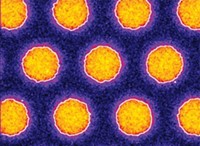Advertisement
Grab your lab coat. Let's get started
Welcome!
Welcome!
Create an account below to get 6 C&EN articles per month, receive newsletters and more - all free.
It seems this is your first time logging in online. Please enter the following information to continue.
As an ACS member you automatically get access to this site. All we need is few more details to create your reading experience.
Not you? Sign in with a different account.
Not you? Sign in with a different account.
ERROR 1
ERROR 1
ERROR 2
ERROR 2
ERROR 2
ERROR 2
ERROR 2
Password and Confirm password must match.
If you have an ACS member number, please enter it here so we can link this account to your membership. (optional)
ERROR 2
ACS values your privacy. By submitting your information, you are gaining access to C&EN and subscribing to our weekly newsletter. We use the information you provide to make your reading experience better, and we will never sell your data to third party members.
Catalysis
Single atoms catalyze Suzuki reactions
Flow chemistry process takes place on carbon nitride surface
by Carmen Drahl
July 8, 2018
| A version of this story appeared in
Volume 96, Issue 28
As effective as the palladium-catalyzed Suzuki reaction is for forming carbon-carbon bonds, researchers see room for improvement. Homogeneous palladium catalysts can be tough to separate from products, and fixing the problem by attaching catalysts to solid supports can lead to problematic metal leaching. Meanwhile, heterogeneous palladium nanoparticle catalysts on solid supports rarely catalyze the reaction efficiently. Now, Javier Pérez-Ramírez of ETH Zurich and colleagues suggest another route to Suzuki chemistry: single-atom catalysis (Nat. Nanotechnol. 2018, DOI: 10.1038/s41565-018-0167-2). Multiple labs have demonstrated catalysis of over 10 reactions by isolated atoms supported on a solid. This team anchored palladium atoms to nanometers-thick sheets of exfoliated graphitic carbon nitride, which contain metal-stabilizing nitrogen-rich sites. The catalyst performed a Suzuki reaction in flow for 13 hours with negligible metal leaching. Calculations from coauthor Núria López of the Institute of Chemical Research of Catalonia suggest that the palladium atoms continuously adapt their coordination within the same site on the carbon nitride as the reaction progresses, minimizing energy at each step. Experimentally verifying that result will be challenging, the authors say, but improvements to catalyst-monitoring spectroscopy techniques could help. The authors plan to test other reactions and metals with their system as well as launch a company to market the catalysts.




Join the conversation
Contact the reporter
Submit a Letter to the Editor for publication
Engage with us on Twitter